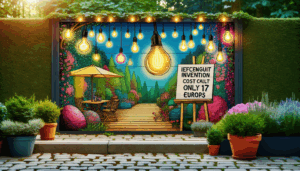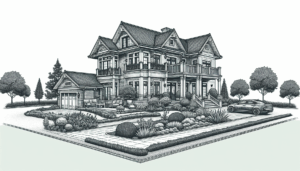The passage of time takes its toll, not only on people, but also on our homes. In many occasions, we are not able to detect the signs that are appearing in our home and that can indicate that something is not working properly. Detecting these signs in time can be vital to maintain safety in our home. To help detect them, the experts at habitissimo, show us five signs that indicate that our home is not in good condition.
Home structure
The first point to consider is whether the structure of the home is being maintained correctly, as it is key to the stability of our house. We must pay attention to the appearance of cracks, because depending on their characteristics, they can indicate certain structural pathologies. Habitissimo indicates that “if cracks appear suddenly, are deep or widen slowly, it is important to have them checked by a qualified technician.” If they are the result of structural problems, immediate action must be taken because the building’s safety may be compromised. Other defects that indicate structural problems are doors or windows that do not fit well or have fractured glass, bulging walls or floors that lean slightly or sink. In these cases, they advise consulting an expert who can conduct a thorough inspection and then take the necessary measures.
Electrical installation
Another sign of deterioration that we must pay special attention to are faults in the electrical installation. The experts at habitissimo warn that a poorly maintained electrical installation represents a real risk to our homes and ourselves. Beyond thoroughly checking the entire electrical installation every five years, there are some symptoms that should alert us. The most obvious is the frequent occurrence of overloads or short circuits, but there are also others such as blackened outlets, overload or fatigue of materials creating false contacts, or an unpleasant odor similar to fish indicating that the electrical cables are overheating.
Dampness and condensation
On the other hand, another indication that the home is not in good condition is dampness and condensation. Although not all of them pose the same danger, depending on the type of dampness, they can represent a double problem. On one hand, if they persist over time, they can have a negative effect on coatings and even on structural elements. On the other hand, they create the necessary conditions for mold and other harmful pathogenic microorganisms to proliferate.
Plumbing
Likewise, the experts at habitissimo highlight problems in the plumbing installation as another warning sign of a deteriorated house. They indicate that a leaky pipe in poor condition can cause tiles to fall off. Likewise, a blockage in the downspout can break it and cause damage. Some symptoms of deteriorating plumbing installations are stains of moisture, lack of water pressure, drains that do not work well, and bad smells or water noises when the installation is not in use.
Ventilation and natural light
Finally, a clear sign that your house is not in good condition is insufficient ventilation and lack of natural light. These problems not only affect the quality of indoor air, but can also lead to the appearance of dampness and mold, deteriorating surfaces and putting the health of the inhabitants at risk. Rooms that feel stuffy, with stale air and a musty smell, are indicative of poor air circulation. Also, dark and gloomy spaces that require artificial light during the day show a lack of natural light, which can affect emotional well-being and energy efficiency of the home. “Addressing these problems may involve installing more windows, creating cross ventilation, or using skylights to improve lighting and air quality,” conclude from habitissimo.












